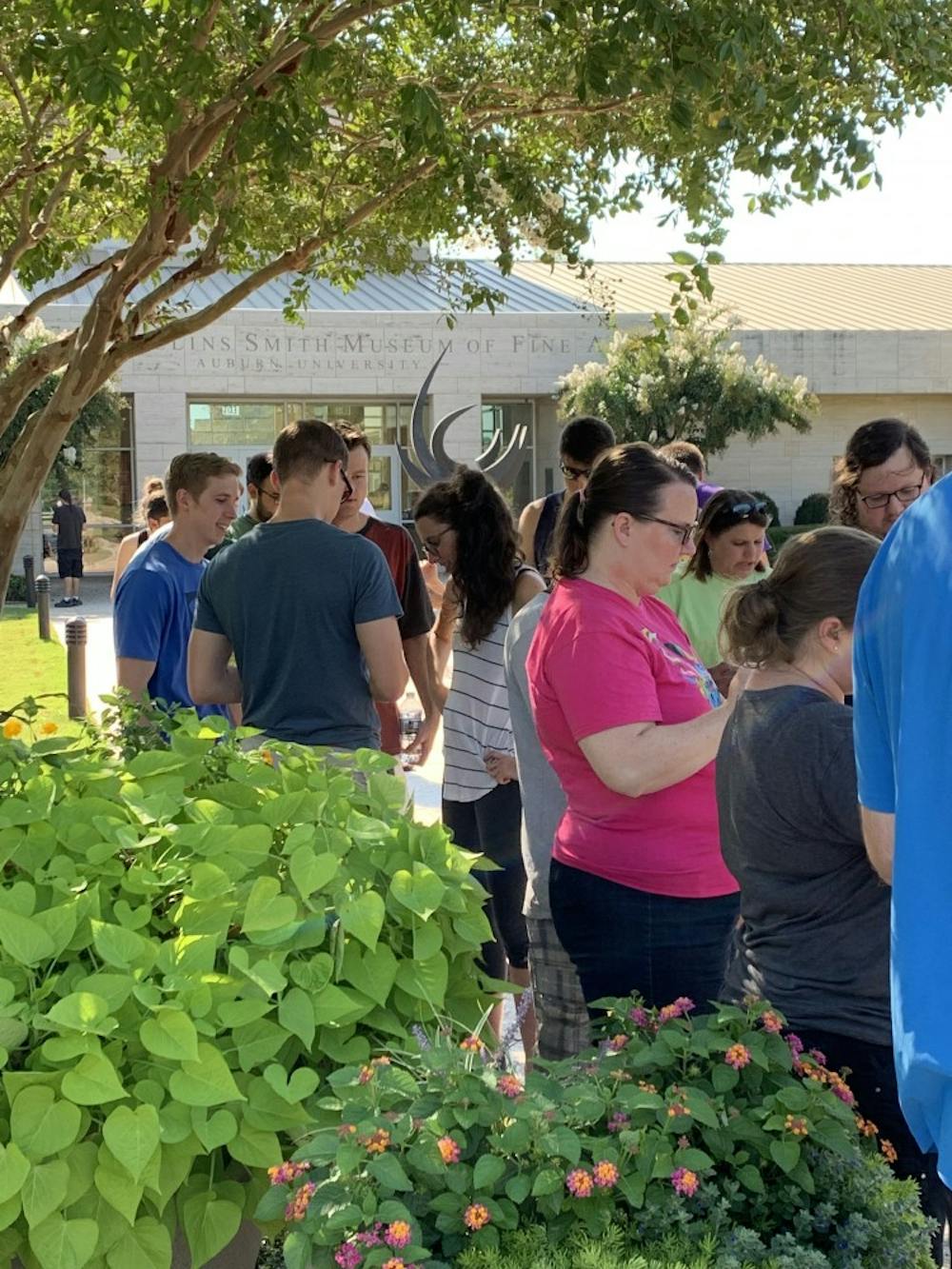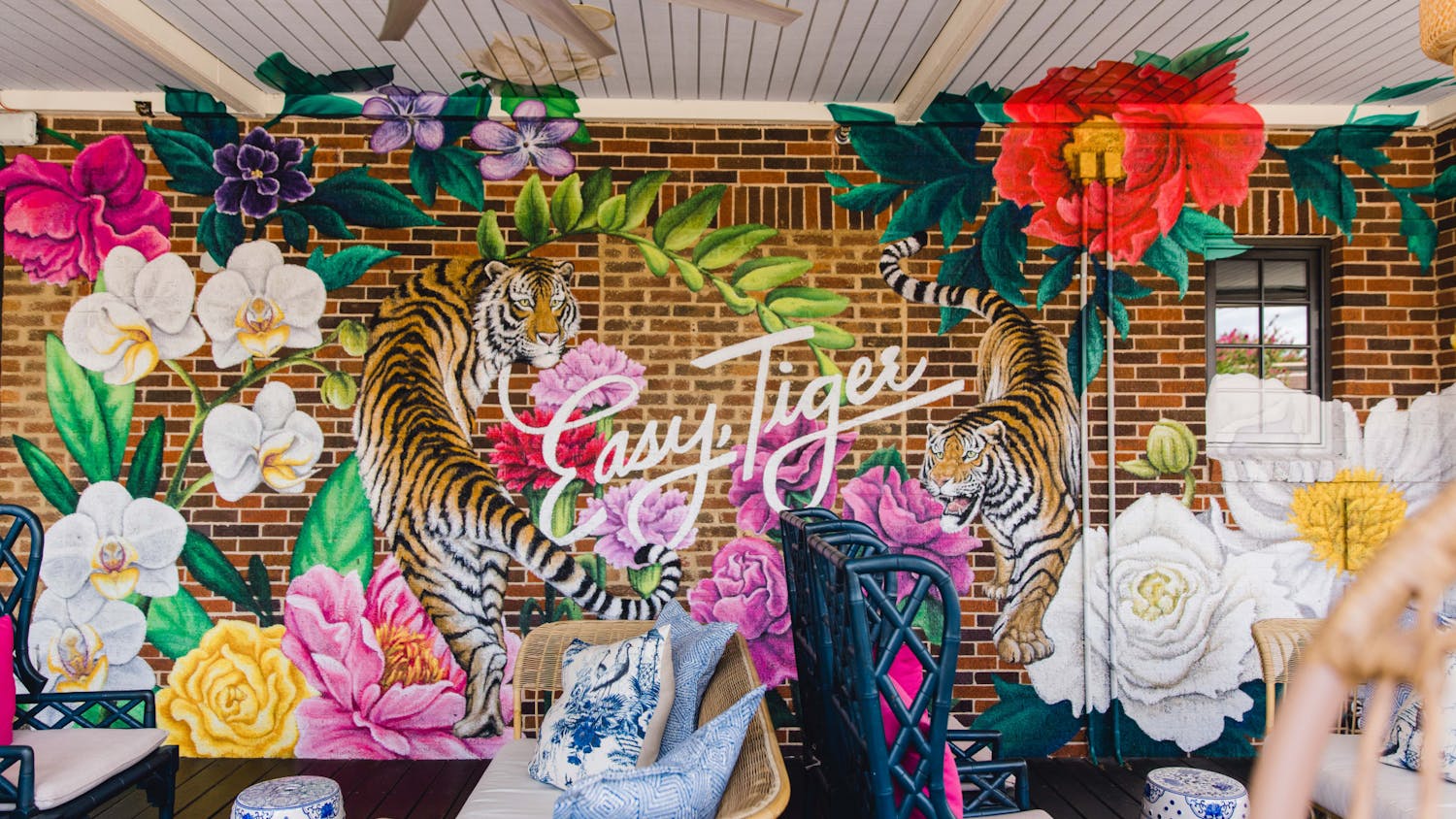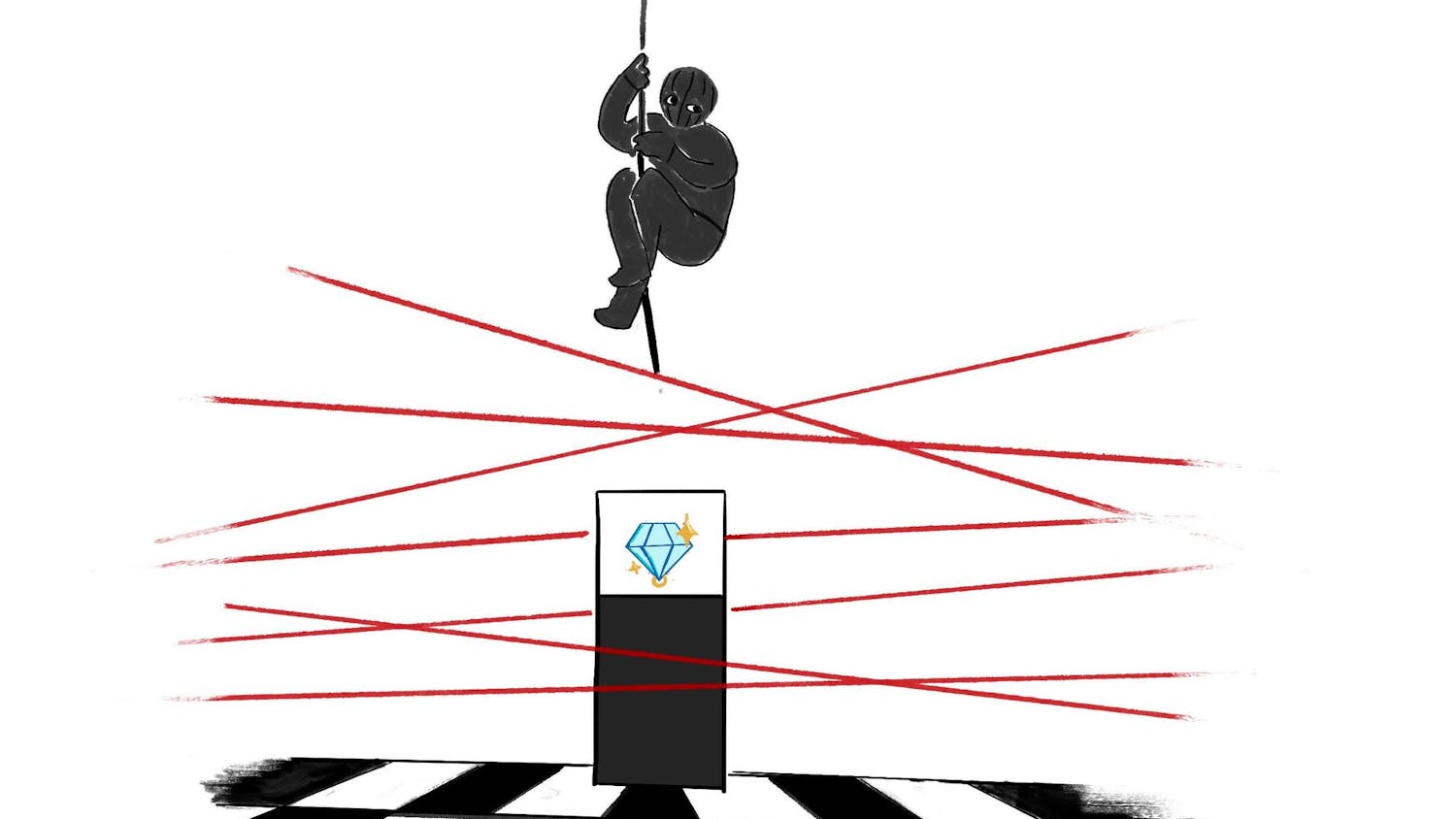In the time between classes, or after getting home from school, some residents across Auburn have decided to skip their coffee break and instead engage in the virtual quest of trying to catch them all.
But there’s one place that won’t allow it anymore. The Jule Collins Smith Museum of Fine Art — a venue considered by players to be perfect for gathering together to Pokémon hunt — is saying players are interfering with the museums’ ability to showcase art to visitors.
Originally released in July 2016, Pokémon GO is a mobile phone game where players can travel to real-life locations to catch, train and compete with their Pokémon and “catch them all.” Once Niantic, the game’s developer and publisher, created cooperative raids — where players can work together to defeat powerful Pokémon — the relatively isolated players quickly formed dedicated communities.
The Jule Collins Smith Museum of Fine Art had been a favored spot for players due to the number of in-game locations and good lighting. The museum was home to several Pokémon gyms — a virtual setting where players can battle each other — and it had regularly been the location for monthly community day gatherings.
Suddenly, many of the museum’s in-game locations disappeared. Auburn players couldn’t believe it.
Those players can’t be simplified to one demographic. The game is popular among all ages, for individuals and for families.
Leslie Johnston was standing in the middle of a group of Pokémon GO players in Felton Little Park, hiding from the summer heat under the shade of a tree. She was playing the game on her phone and on her daughter’s green-cased tablet, which she clutched to her side.
“No one had communicated with us before they took the gyms away,” Johnston said.
Johnston’s daughter introduced her to the game. She wanted to play the game, but her mother had to set up a parent account first.
“Then I got hooked on it, and now she hardly plays,” Johnston said.
One woman told Johnston that it was the only thing she and her teenage son could still do together.
Members of Auburn’s Pokémon GO community communicate through the messaging app GroupMe, coordinating times to work together on a raid. The main GroupMe consists of hundreds of active players.
“We didn’t know there was such a huge community of players in town,” said Chris Valeri, whose family started playing together as soon as the game came out.
Now, Valeri thinks he has more friends who play the game than ones who don’t.
Romances have also developed in the community, Johnston said.
Johnston said the group allows her to meet professors, graduate students, freshmen and even residents of nearby cities such as Valley and Alexander City.
On the monthly community day, hundreds of players gather for a cookout and play together to receive a special in-game benefit that varies from month to month.
“So many video games are just, you know, sitting on the sofa,” Johnston said. “This one encourages you to get out and explore.”
For Johnston, the museum’s outdoor interactive exhibits allowed her to still spend time with her daughter after she lost interest in the game. Her daughter could play on the exhibits while Johnston played Pokémon GO.
She said she isn’t sure if the “mom factor” made the game uncool in her daughter’s eyes.
Four of the five gyms at the art museum were removed, though two more were added shortly after.
In an email sent to The Plainsman, Johnston said the museum is one of only a few places in Auburn that is safe for walking at night, which is important to her as a single female.
While city parks provide a safe area for players during the day, all parks close at sundown. The only safe place to play at night is the museum, Johnston said.
“I was really shocked to see they took it down,” said Kaicie Chasteen, a graduate student in poultry science, “because they’ve been nothing but nice to us for the last — as long as I’ve been participating in this, and that’s been a year and a half, two years now — and what happened?”
Chasteen said community members donated to the museum when they could and tried to stay away from the museum when there were events planned.
Johnston said the former director had given the group permission to have their community days on museum grounds. In February, a new director took over.
The new director and chief curator, Cindi Malinick, became aware of the Pokémon GO community even before she accepted the position.
During the interview process, she had to make her way through a group of players just to get into the museum.
According to Malinick, the community has caused problems for the museum and its guests. She said there have been numerous traffic incidents and life safety issues involving Pokémon GO players.
She said cars have stopped in the middle of the road and have blocked the road for emergency vehicles. Gatherings of players have blocked the entrances to the museum, leaving guests trying to find their way through the crowd.
According to Jonathan Osborne, director of marketing and communications for Jule Collins Smith Museum of Fine Art, the presence of Pokémon GO players makes it harder for buses full of school children to park at the museum.
Malinick said she has been aware of at least two large gatherings of players at the museum since she became director, neither of which were cleared with the staff. One gathering, she said, occurred at the same time as a planned event.
For the museum, contacting Pokémon GO developer Niantic has been on the docket for a while, Osborne said.
Malinick said she made the decision after six months of observing the situation and receiving complaints from a host of stakeholders.
“It’s been in the press in the past about participants (who play Pokémon GO) and some of the dangers they even pose for themselves, much less other guests,” Malinick said. “I know we are not a unique situation. It was obvious by the way the company addressed it.”
She said a lot of cultural institutions were excited and interested when the game first launched, but it became obvious that it was not about the institution, but about something on participants’ phones. Auburn isn’t the only place where Pokémon GO is an issue.
According to The Guardian, a british newspaper, the initial embrace of Pokémon GO by American art museums didn’t come without drawbacks: A Florida museum’s garden was vandalized, with Pokémon GO team names carved into trees.
The United States Holocaust Memorial Museum asked Niantic to remove game locations from their grounds, worried that the game would interfere with the museum’s educational and memorial mission.
“My job is to think about this place holistically, and we can’t please all of the people all of the time; that’s not our role,” Malinick said. But my role certainly is to ensure, to the extent possible, the greatest number of people that want to engage at the museum are able to — easily, safely.”
Do you like this story? The Plainsman doesn't accept money from tuition or student fees, and we don't charge a subscription fee. But you can donate to support The Plainsman.





